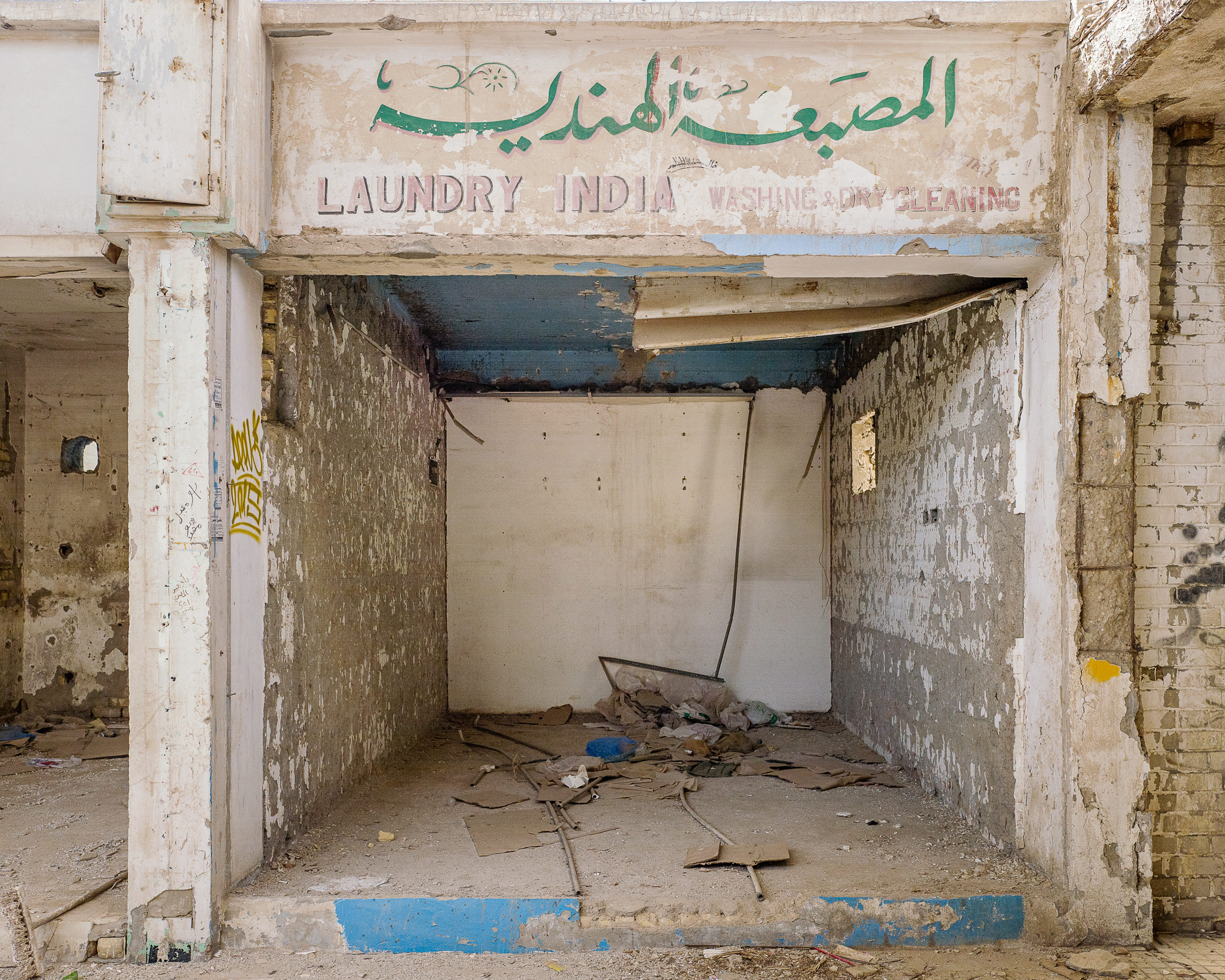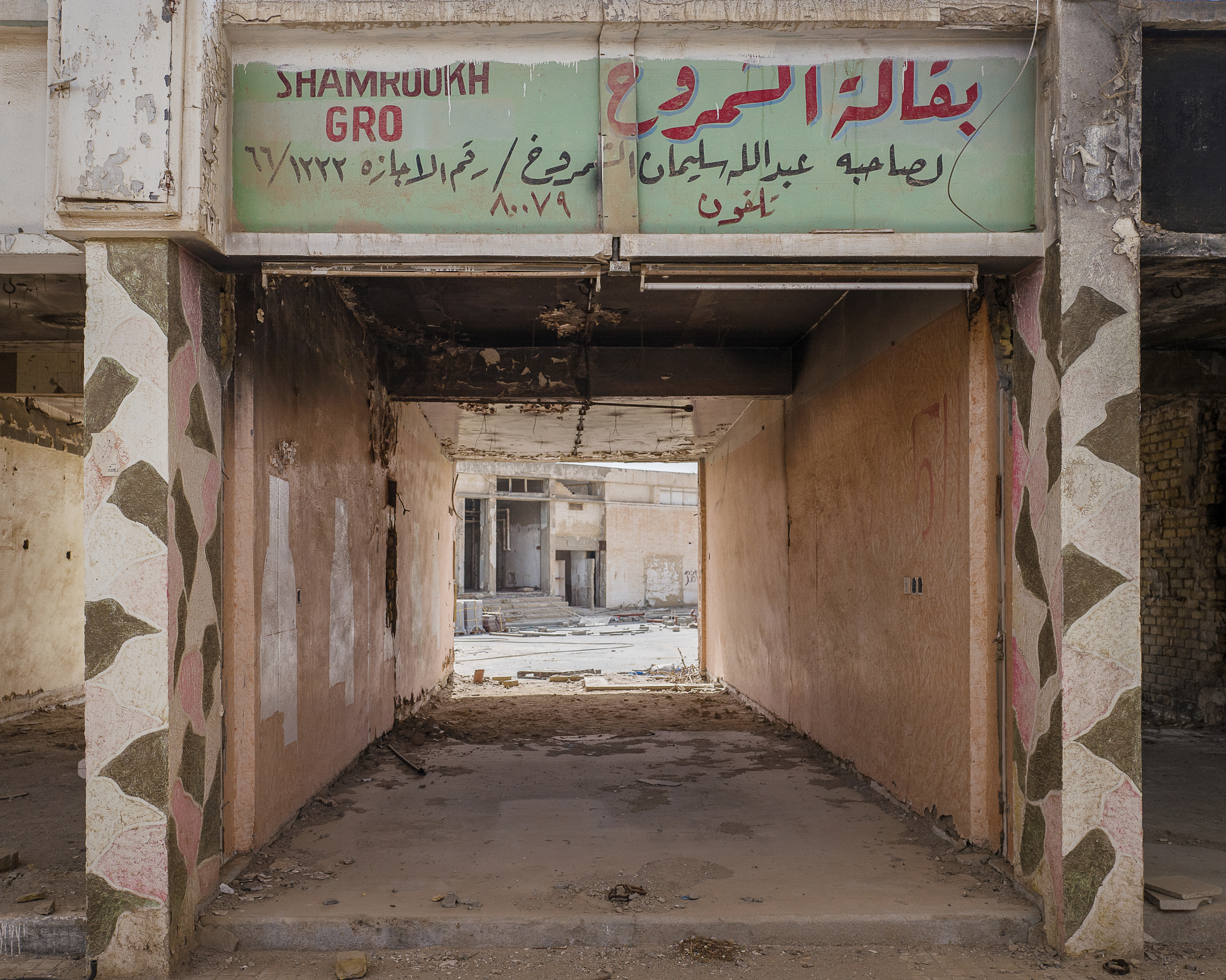East Ahmadi Market
Ahmadi, Kuwait
Date: 2015
Medium: Digital
Date: 2015
Medium: Digital
Al-Ahmadi was founded in 1946 with the discovery of oil in the south of Kuwait. Centered around the oil industry, the town served the growing needs of the newly hired personnel of the Kuwait Oil Company. Conceived by British architects and city planners, Al-Ahmadi represented a new concept in urban design. Remote though it was from the rest of the cities, Al-Ahmadi thrived as
a self-contained suburban town, inviting many curious visitors throughout the years to eye its unique build. In the center of the town was the souq (market) built in 1961, which served as a vital point of exchange and interaction for its residents. Fifty years later, in 2011, the market closed its doors. Times had changed, many of the expats had left Kuwait as the country nationalized much of its oil industry, and as the area emptied out, the market gradually lost its relevance and became abandoned.
Nestled in a circular corner lot the size of several football fields , the old souq boasted several dozen shops housed in two separate and large structures of concrete topped with a lattice wall that ventilated and illuminated the space. Shops — from opticians to dry cleaners and even bicycle shops — were lined side by side in rows of approximately 10. What struck Huda on her first visit to the Souq in 2015 were the store signs; each sign, drawn by hand, displayed a variety of Arabic scripts including naskh, nostalgic, ruq’ah, and free-hand. The signs carried information on the year in which the store opened, mostly ranging from 1965 to 1974, and the names of the Palestinian, Indian, Iranian and Syrian shop-owners.
In 2013, the National Council of Culture, Arts, and Letters (NCCAL) announced plans for the restoration of this historic market into a cultural platform.
Today,as the market lays empty and in ruins, these store signs act as the only relic of the market’s legacy in what once was a thriving town.









